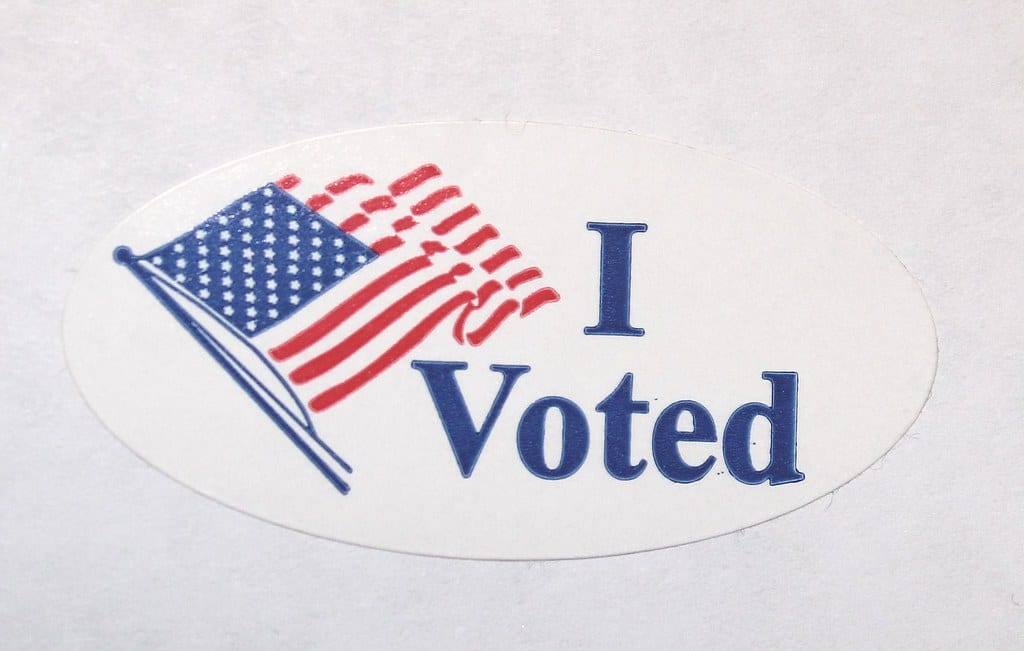 Hopefully whether by mail weeks ago or in person sometime today, you have been able to cast your vote in the 2020 election. Much attention has been paid to the significance of the presidential contest, but the outcomes of elections for state and local offices can be just as significant despite the fact that many people know less about the candidates and positions they are running for. Thinking specifically about the environment, why is voting important, and how might the people we elect at all levels of government be able to affect environmental issues?
Hopefully whether by mail weeks ago or in person sometime today, you have been able to cast your vote in the 2020 election. Much attention has been paid to the significance of the presidential contest, but the outcomes of elections for state and local offices can be just as significant despite the fact that many people know less about the candidates and positions they are running for. Thinking specifically about the environment, why is voting important, and how might the people we elect at all levels of government be able to affect environmental issues?
Municipal – City/Township/Borough, County, School Board
Local municipalities’ role in addressing zoning and codes, planning and land use, local streets and infrastructure, sewer and water systems, and parks all shape many important environmental impacts. Much of what local government controls can affect your day-to-day life more than the decisions about environmental regulation made at the federal level. For example, a city or township can work to install electric vehicle charging stations in a public parking garage or parking lot, making it more convenient for residents and visitors to drive electric cars. Easton’s Third Street and Pine Street parking garages both have charging stations. Local officials also guide decisions about flood management, recycling and composting programs, and ordinances for property upkeep. On the county level, officials are responsible for community development, environmental planning, and public health and safety. Northampton County maintains many parks, including Louise Moore Park, Wy-Hit-Tuk Park, and Fry’s Run Park, among others. There is also a county-level Energy, Environment and Land Use Committee that meets monthly and includes four members of the County Council. Local bodies like this committee are opportunities to get involved with decision makers and see a more direct response to your input than you might at higher levels of government.
Finally, most people don’t have the environment at the front of their mind when voting for school board members, but the decisions they make can have direct and indirect environmental implications too. Bethlehem Area School District is a great example of a district taking steps in their operations and facilities to be more sustainable, with two of their school buildings achieving the Leadership in Energy and Environmental Design (LEED) Gold standard and solar panels installed at five schools. Creating a curriculum that provides scientifically sound environmental education to students at all levels can build our future generation’s capacity to be environmental citizens and leaders.
State
While, as of 2018, the U.S. Environmental Protection Agency (EPA) employed about 15,000 people and had a $8 billion budget, state environmental departments utilize significantly more resources. The New York State Department of Environmental Conservation alone staffs 3,000 people and has a budget of $1.4 billion, and is just one of 49 states. This underscores states’ importance in doing much of the on-the-ground work of protecting our environment. In addition to ensuring that federal environmental laws and standards are adhered to, states pursue their own policies that affect the environment. In Pennsylvania, one recent decision that garnered attention was when the governor signed an executive order to direct the PA Department of Environmental Protection to begin a rulemaking process so Pennsylvania can participate in the Regional Greenhouse Gas Initiative (RGGI), which is a multi-state initiative to “cap and reduce” carbon emissions from electric power plants. Another was when the state legislature created a moratorium on municipal ordinances creating fees for or bans on single-use plastics. Each of these decisions has potentially significant implications for the environment and our daily lives. Being aware of important policies at the state level and contacting your representatives regarding issues that matter to you is a great means of civic engagement. Elected state officials each represent a smaller number of constituents than our federal officials, which might increase your confidence that making your voice heard can make a difference.
Federal environmental policies often receive more media attention than those at the local and state level, and they are certainly important for ensuring a clean, sustainable environment for all people. However, federal policies don’t address every aspect of environmental protection, and local and state governments fill in those missing pieces, help implement federal policies, and are often more directly responsive to their constituents. While deciding how to cast your vote, it is worthwhile to take the time to learn about candidates for local and state offices and how their leadership might affect your community in terms of the environment, as well as other issues that are important to you. One way to do this is through websites like vote411.org and ballotpedia.org, which both provide non-partisan information about the candidates you will see on your ballot.
Voting isn’t the only way to affect the state of our environment, and significant action can happen outside of government structures and legislation as well. Volunteer organizations, neighborhood clean-ups, community gardens, or even just talking with a neighbor about how you try to live more sustainably are all ways to get involved outside of election season. Nevertheless, government policies at all levels can accelerate or block various community or individual environmental actions, so it’s important to be an informed voter and to be an engaged community member in other ways. Everyone has the power to change their piece of the world in some way, and voting is one path toward achieving that.
